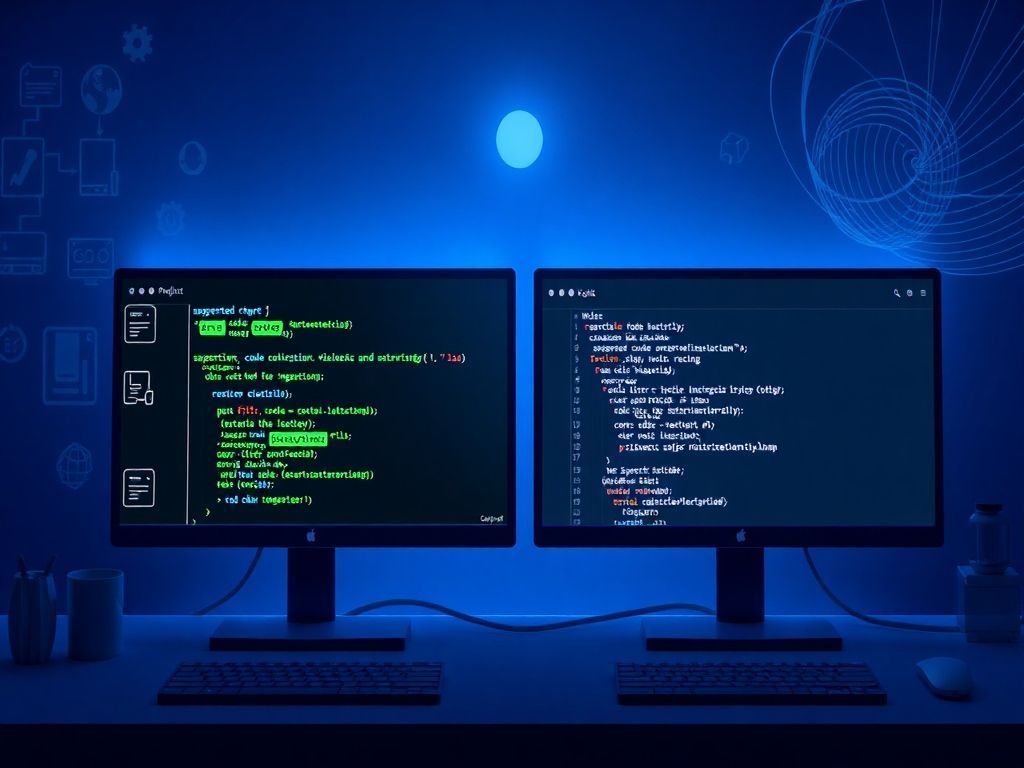Lập trình không phải là môn học khó nhằn nếu bạn có phương pháp học hiệu quả. Bài viết này sẽ giúp bạn hiểu rõ hơn về lập trình, cung cấp những tip hữu ích và cách tối ưu mã nguồn.
Lập trình dễ hiểu: Khởi đầu với các khái niệm cơ bản
Embarking on your coding journey can feel like entering a new world, filled with unfamiliar terms and concepts. This chapter aims to demystify the fundamental building blocks of programming, making the process more accessible and, well, dễ hiểu. We’ll explore essential concepts like variables, data types, loops, and conditional statements, using simple examples and concise code snippets to illustrate each point.
Variables: The Containers of Information
Think of variables as labeled containers that hold information. This information can be anything from numbers and text to more complex data structures. In programming, we use variables to store and manipulate data.
For example, in Python:
“`python
age = 30
name = “Alice”
“`
Here, `age` is a variable that stores the integer value 30, and `name` is a variable that stores the string “Alice”. The `=` sign is the assignment operator, assigning the value on the right to the variable on the left. Choosing descriptive names for your variables is a crucial *tip cho lập trình viên* as it significantly enhances code readability.
Data Types: Understanding the Nature of Data
Data types define the kind of values a variable can hold. Common data types include:
- Integer (int): Whole numbers (e.g., 10, -5, 0).
- Float (float): Decimal numbers (e.g., 3.14, -2.5).
- String (str): Text enclosed in quotes (e.g., “Hello”, “World”).
- Boolean (bool): Represents truth values, either `True` or `False`.
Understanding data types is essential because it dictates the operations you can perform on the data. For instance, you can add two integers, but you can’t directly add an integer to a string without converting it first.
Loops: Repeating Actions Efficiently
Loops allow you to execute a block of code repeatedly. This is incredibly useful for automating tasks and processing large amounts of data. Two common types of loops are `for` loops and `while` loops.
*For loop:* Iterates over a sequence (e.g., a list or a range of numbers).
“`python
for i in range(5):
print(i) # Output: 0 1 2 3 4
“`
*While loop:* Executes a block of code as long as a condition is true.
“`python
count = 0
while count < 5:
print(count)
count += 1 # Output: 0 1 2 3 4
```
Understanding and using loops effectively is a key aspect of *tối ưu mã nguồn*.
Conditional Statements: Making Decisions in Code
Conditional statements allow your program to make decisions based on certain conditions. The most common conditional statement is the `if` statement.
“`python
age = 20
if age >= 18:
print(“You are an adult.”)
else:
print(“You are a minor.”)
“`
The `if` statement evaluates a condition (in this case, `age >= 18`). If the condition is true, the code block under the `if` statement is executed. Otherwise, the code block under the `else` statement is executed. You can also use `elif` (else if) to check multiple conditions.
Putting It All Together: A Simple Example
Let’s combine these concepts in a simple program that checks if a number is even or odd:
“`python
number = 7
if number % 2 == 0:
print(f”{number} is even.”)
else:
print(f”{number} is odd.”) # Output: 7 is odd.
“`
This example demonstrates how variables, data types, conditional statements, and operators work together to perform a specific task. Aiming for *lập trình dễ hiểu* often involves breaking down complex problems into smaller, manageable steps, as illustrated here.
Mastering these basic concepts is crucial for building a strong foundation in programming. As you progress, you’ll encounter more advanced topics, but these fundamentals will remain essential. Remember to practice regularly and experiment with different code examples to solidify your understanding.
Tối ưu mã nguồn: Cách viết code hiệu quả và dễ đọc.
Following our exploration of “Lập trình dễ hiểu: Khởi đầu với các khái niệm cơ bản,” where we demystified programming fundamentals such as variables, data types, loops, and conditional statements using concise code examples, let’s delve into a crucial aspect of software development: **Tối ưu mã nguồn**, or code optimization. This chapter, titled “Tối ưu mã nguồn: Cách viết code hiệu quả và dễ đọc” (Code Optimization: How to Write Effective and Readable Code), focuses on techniques for writing clean, efficient, and maintainable code, essential skills for any aspiring programmer.
Writing code that works is only half the battle. The other half is ensuring that your code is easily understandable, modifiable, and performs efficiently. This is where code optimization comes into play. It’s about writing code that not only solves the problem but does so in the most elegant and efficient way possible.
One of the most fundamental aspects of **Tối ưu mã nguồn** is choosing appropriate variable names. Variable names should be descriptive and clearly indicate the purpose of the variable. For example, instead of using `x` or `y`, use names like `customerName`, `productPrice`, or `numberOfItems`. This simple practice dramatically improves code readability. Imagine trying to debug a program with hundreds of lines of code where all the variables are named `i`, `j`, `k`, etc. It would be a nightmare!
Another crucial technique is writing clear and concise comments. Comments are invaluable for explaining the *why* behind your code. While the code itself explains *what* it does, comments provide context and rationale. Good comments explain complex logic, clarify assumptions, and document any potential pitfalls. However, avoid over-commenting. Comments should supplement the code, not reiterate it. A good rule of thumb is to comment on anything that isn’t immediately obvious from the code itself.
Choosing the right data structures is also paramount for **Tối ưu mã nguồn**. Different data structures have different performance characteristics. For example, if you need to frequently search for elements, a hash table or a balanced tree might be more efficient than a simple array. Understanding the strengths and weaknesses of various data structures, such as arrays, linked lists, hash tables, trees, and graphs, is essential for writing efficient code. Consider the trade-offs between memory usage and execution speed when selecting a data structure.
Furthermore, writing code that is easy to read and maintain is not just a matter of aesthetics; it’s a matter of practicality. Code that is difficult to understand is more prone to errors and harder to modify. This can lead to increased development costs and decreased software quality. Investing time in writing clean, well-structured code pays dividends in the long run.
Here are some practical tips for writing readable and maintainable code:
- Use consistent indentation: Consistent indentation makes the code structure clear and easy to follow.
- Keep functions short and focused: Each function should have a single, well-defined purpose.
- Avoid deeply nested loops and conditional statements: Deeply nested structures can be difficult to understand and debug.
- Use meaningful function names: Function names should clearly indicate what the function does.
- Break down complex problems into smaller, manageable parts: This makes the code easier to understand and test.
For **Tip cho lập trình viên**, consider using code linters and formatters. These tools automatically enforce coding standards and can help identify potential problems. They can also automatically format your code to ensure consistency.
Finally, remember that code optimization is an iterative process. It’s not something you do once and forget about. As your code evolves, you’ll need to revisit it and refactor it to maintain its quality and efficiency. The principles of **Lập trình dễ hiểu** should guide you through this process.
As we transition into the next chapter, “Tip cho lập trình viên: Nâng cao kỹ năng và hiệu suất,” we will explore practical tips for enhancing your programming skills and boosting your productivity, building upon the foundation of clean and efficient code established here.
Here’s the chapter content:
Chapter Title: Tip cho lập trình viên: Nâng cao kỹ năng và hiệu suất
Building upon our previous discussion on “Tối ưu mã nguồn: Cách viết code hiệu quả và dễ đọc,” where we explored techniques like meaningful variable naming, clear commenting, and appropriate data structure usage, this chapter delves into actionable tips for programmers to elevate their skills and performance. The previous chapter emphasized the importance of writing readable and maintainable code, which is a cornerstone of effective software development. Now, let’s explore how to further enhance your capabilities as a programmer.
One of the most crucial skills for any programmer is the ability to effectively find and utilize resources. The programming landscape is constantly evolving, with new technologies and libraries emerging regularly. Therefore, mastering the art of information retrieval is paramount.
*Effective Resource Utilization*:
* Leverage Search Engines: Become proficient in using search engines like Google or DuckDuckGo. Learn to formulate precise queries using relevant keywords to quickly find documentation, tutorials, and solutions to common problems. For example, instead of searching “how to sort a list,” try “Python sort list example.”
* Explore Official Documentation: Always refer to the official documentation for the languages, frameworks, and libraries you are using. These documents provide comprehensive information about the features, functionalities, and best practices.
* Utilize Online Forums and Communities: Platforms like Stack Overflow, Reddit (subreddits like r/programming), and specialized forums are invaluable resources for seeking help and sharing knowledge. Before posting a question, make sure to search for existing solutions.
*Learning from the Community*:
The programming community is incredibly supportive and collaborative. Actively engaging with other developers can significantly accelerate your learning and growth.
* Participate in Open Source Projects: Contributing to open source projects is a fantastic way to learn from experienced developers, improve your coding skills, and build your portfolio.
* Attend Meetups and Conferences: Networking with other programmers at meetups and conferences can provide valuable insights and opportunities for collaboration.
* Join Online Communities: Engage in online forums, chat groups, and social media communities to ask questions, share your knowledge, and stay up-to-date with the latest trends.
*Effective Debugging Techniques*:
Debugging is an integral part of the programming process. Mastering debugging techniques can save you countless hours of frustration.
* Understand Error Messages: Carefully read and understand the error messages you encounter. They often provide valuable clues about the source of the problem.
* Use Debugging Tools: Familiarize yourself with debugging tools provided by your IDE or programming language. These tools allow you to step through your code, inspect variables, and identify the root cause of errors.
* Break Down Complex Problems: Divide complex problems into smaller, more manageable parts. Test each part individually to isolate the source of the error.
* Rubber Duck Debugging: Explain your code to someone (or even an inanimate object) can often help you identify logical errors.
*Essential Programming Tools*:
Numerous tools can significantly enhance your productivity and efficiency as a programmer.
* Integrated Development Environments (IDEs): IDEs like Visual Studio Code, IntelliJ IDEA, and Eclipse provide a comprehensive environment for writing, debugging, and testing code.
* Version Control Systems (VCS): Version control systems like Git are essential for managing code changes, collaborating with other developers, and tracking project history. Understanding Git is crucial for **tối ưu mã nguồn** management.
* Code Editors: Lightweight code editors like Sublime Text and Atom are great for quick edits and scripting.
* Debuggers: Debuggers allow you to step through your code, inspect variables, and identify errors.
* Profilers: Profilers help you identify performance bottlenecks in your code.
*Tools in Practice*:
For example, when facing a bug, use the debugger in your IDE to step through the code line by line. Observe the values of variables and trace the execution flow to pinpoint the exact location where the error occurs. Additionally, leverage version control to revert to previous versions of the code if necessary. This systematic approach is key to effective problem-solving and **lập trình dễ hiểu**.
By consistently applying these tips, programmers can significantly enhance their skills, improve their efficiency, and ultimately become more effective developers. Remember that continuous learning and active engagement with the community are essential for staying ahead in the ever-evolving field of programming. Applying these **tip cho lập trình viên** will not only make you a better coder but also a more resourceful and efficient problem-solver.
The next chapter will explore [Placeholder for next chapter topic].
Conclusions
Hy vọng bài viết này đã cung cấp cho bạn những kiến thức cơ bản và tip hữu ích để bắt đầu hành trình lập trình. Hãy kiên trì học hỏi và thực hành để đạt được thành công.











